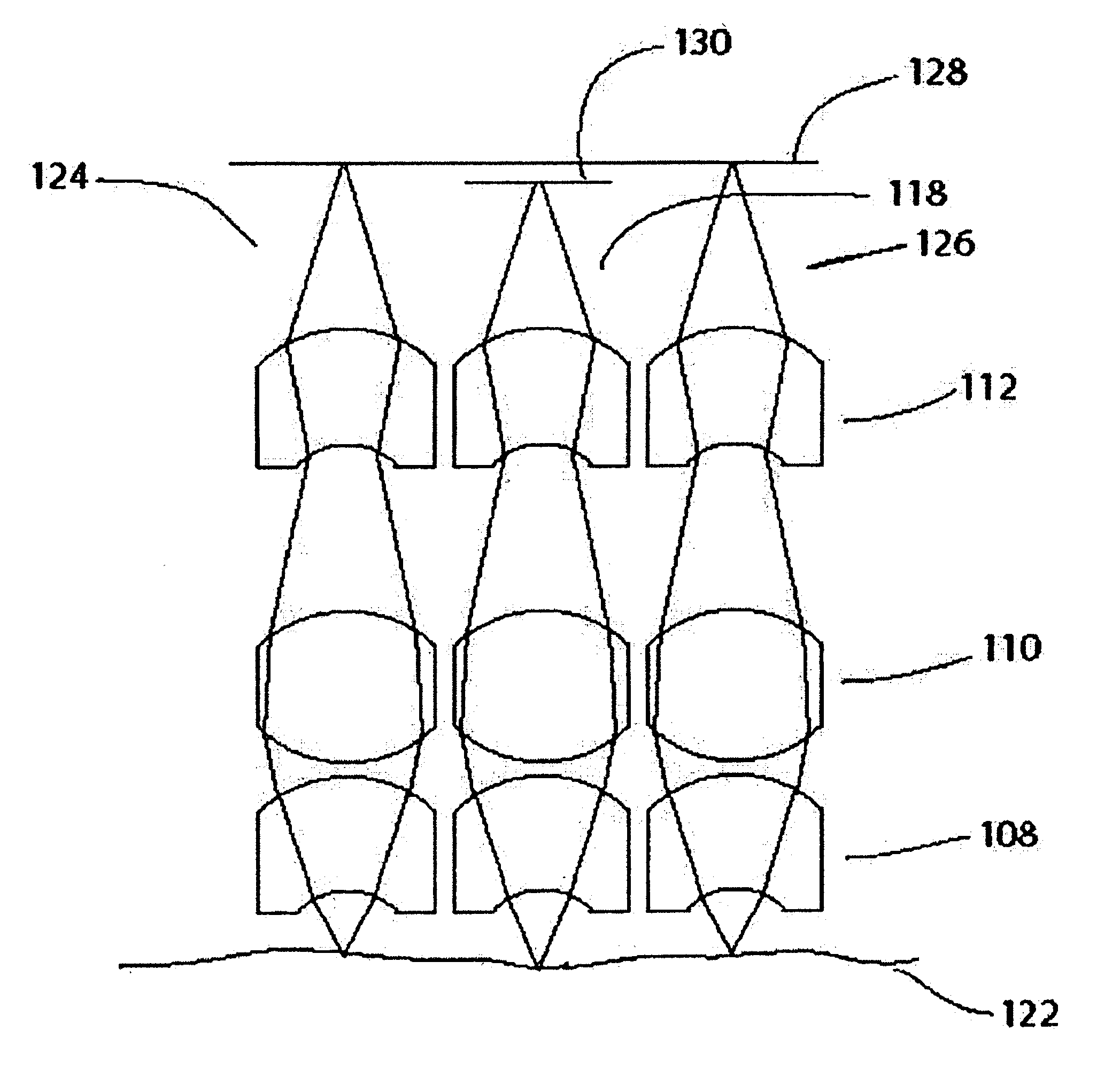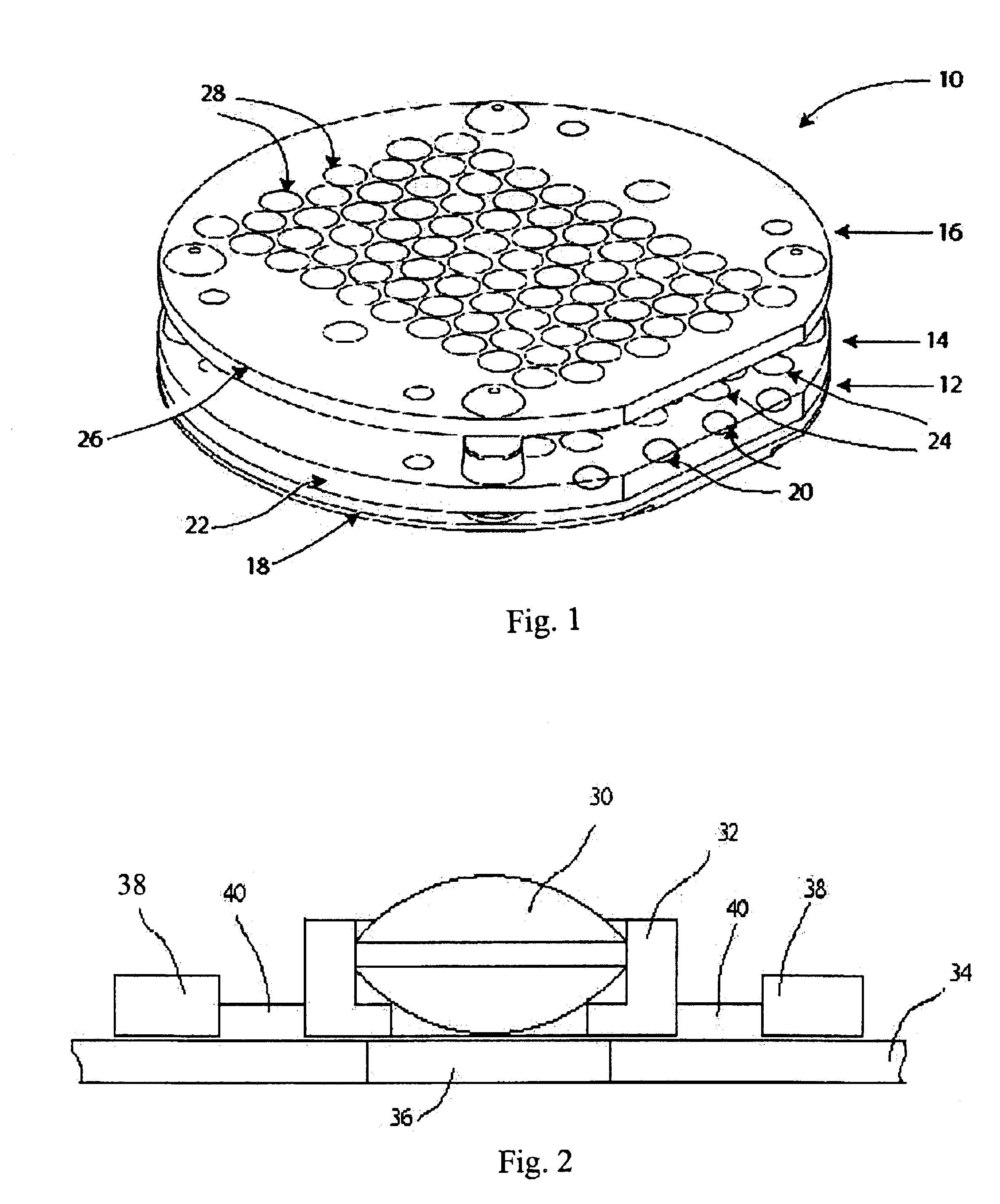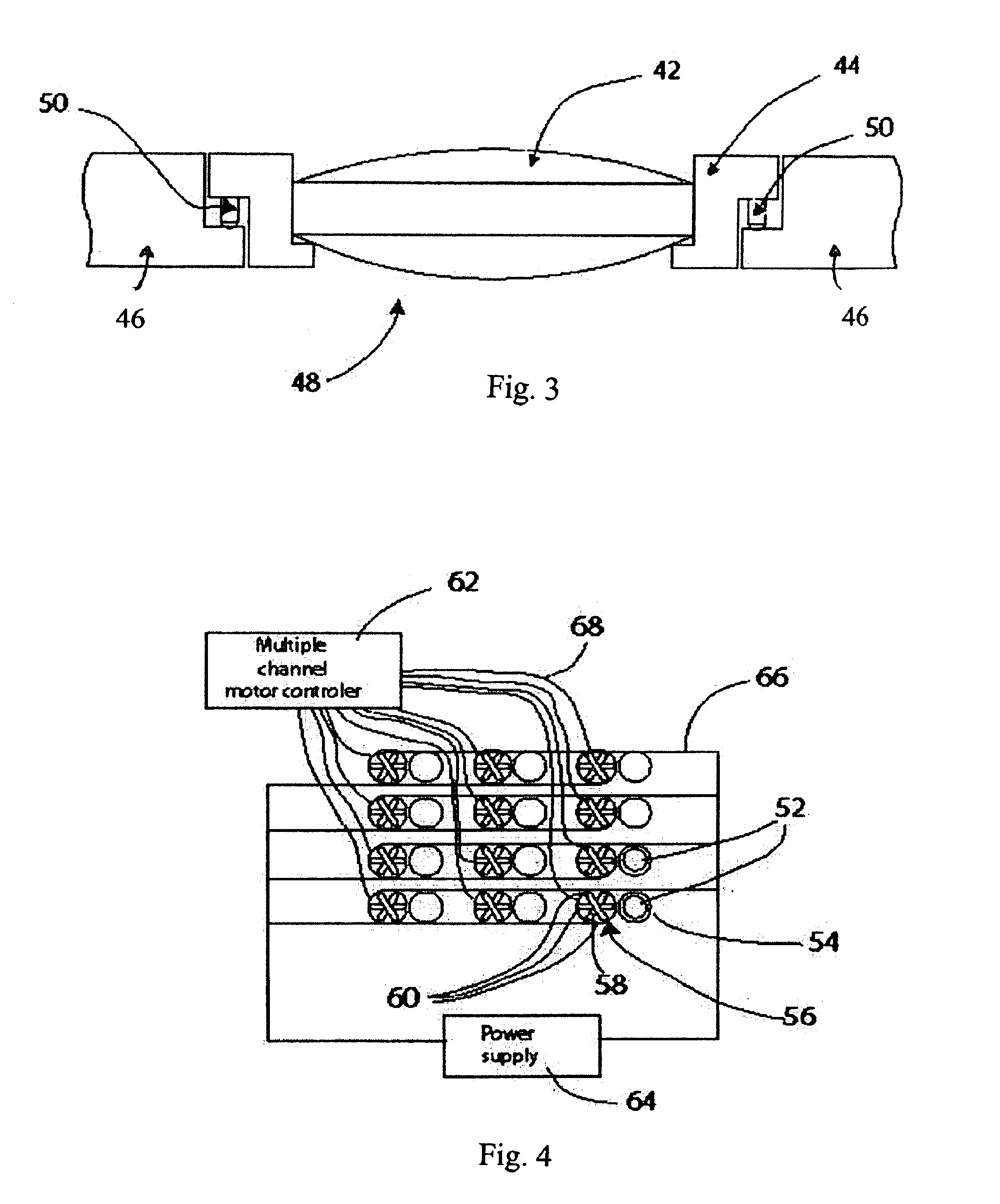Multi-axis imaging system having individually-adjustable elements
a multi-axis imaging and individual adjustment technology, applied in the field of array microscope optical elements, can solve the problems of difficult to construct an array of lenses, degrade system performance, and difficult challenges, and achieve the effect of reducing the effect of spherical aberration and modifying image quality
- Summary
- Abstract
- Description
- Claims
- Application Information
AI Technical Summary
Benefits of technology
Problems solved by technology
Method used
Image
Examples
Embodiment Construction
Although the present invention may be applicable to a variety of multi-axis imaging systems, it is particularly advantageous in miniature microscope arrays wherein a plurality of miniature microscopes are arranged in an array and, heretofore, coupled so as to have a fixed relationship with one another. Accordingly, while the invention is hereafter described in terms of a miniature microscope array, particularly used as an array microscope, it is to be understood that any multi-axis imaging system may fall within the scope of this invention.
An exemplary miniature microscope array 10 is shown in FIG. 1. It comprises three sub-arrays, 12, 14 and 16, each comprising a substrate and one of three respective lenses for each of the optical elements of the microscope array 10. Thus, for each element of the microscope array, substrate 18 supports a bottom lens 20; substrate 22 supports a middle lens 24; and substrate 26 supports a top lens 28; and the respective lenses of each of the three su...
PUM
 Login to View More
Login to View More Abstract
Description
Claims
Application Information
 Login to View More
Login to View More - R&D
- Intellectual Property
- Life Sciences
- Materials
- Tech Scout
- Unparalleled Data Quality
- Higher Quality Content
- 60% Fewer Hallucinations
Browse by: Latest US Patents, China's latest patents, Technical Efficacy Thesaurus, Application Domain, Technology Topic, Popular Technical Reports.
© 2025 PatSnap. All rights reserved.Legal|Privacy policy|Modern Slavery Act Transparency Statement|Sitemap|About US| Contact US: help@patsnap.com



